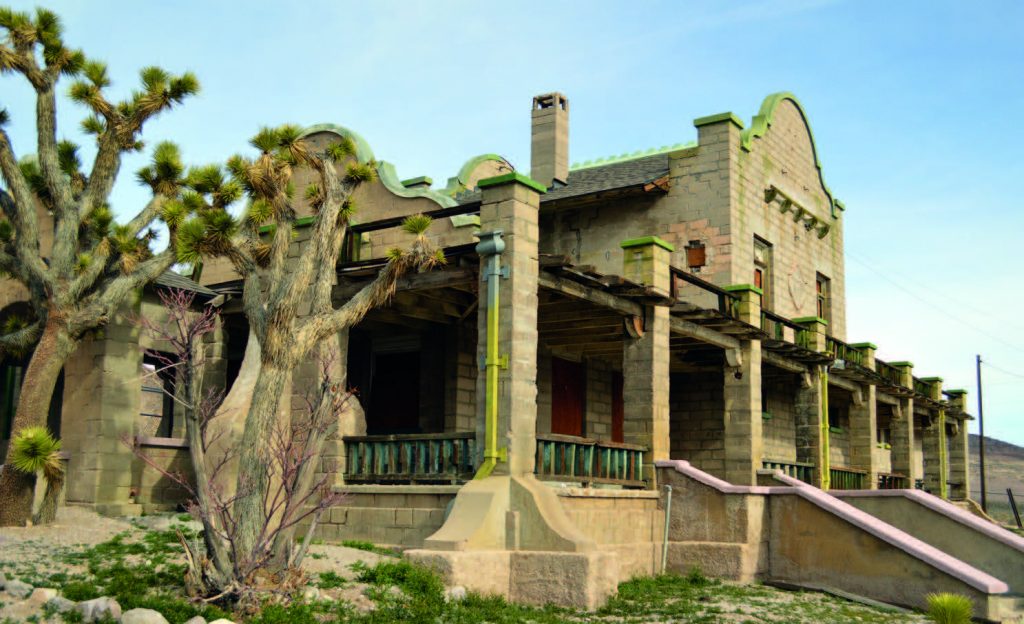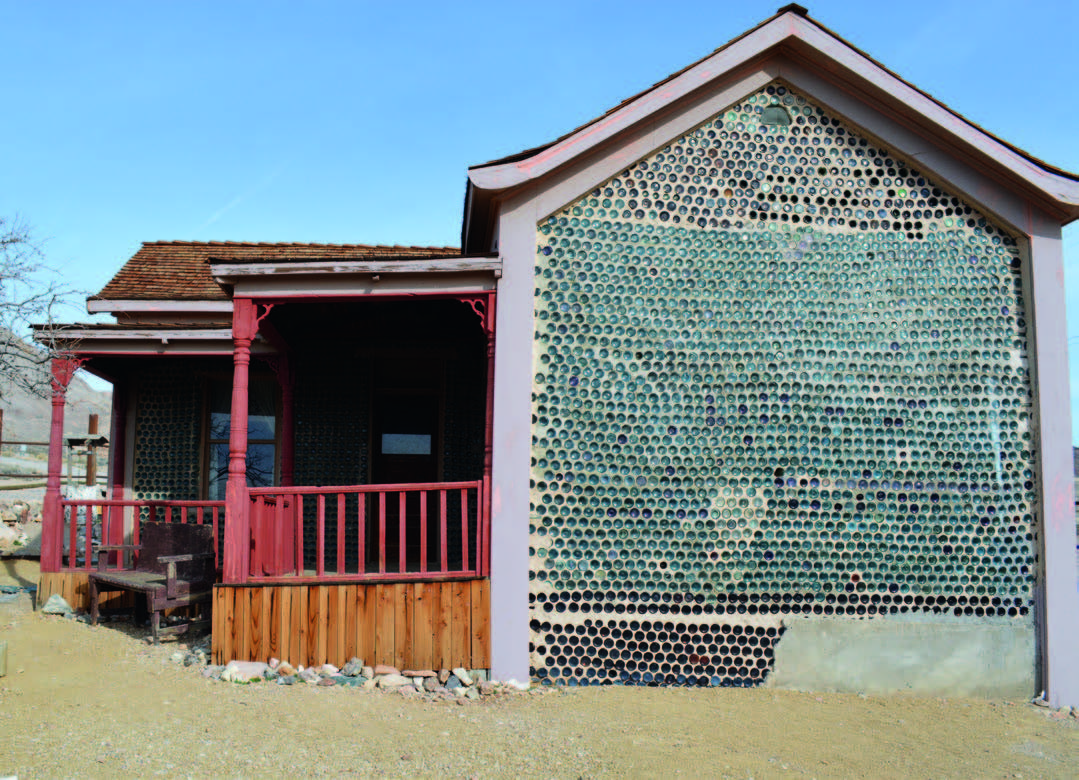Rhyolite
March – April 2016

BY ERIC CACHINERO
Rhyolite began with a simultaneous boom and bust. When prospectors Eddie Cross and Frank “Shorty” Harris discovered rich ore in what would eventually become the Bullfrog Mining District in summer 1904, it is said to have created a dusty stampede of prospectors the likes of which the area had never seen, leaving other mining camps in the region behind. “It looked like the whole population of Goldfield was trying to move at once,” Shorty later recalled. “Men even hiked the 75 miles pushing wheelbarrows.”
Named for the green rock of the area, The Bullfrog Mining District sprang up as movement to the district and Rhyolite picked up steam. Rhyolite quickly became more than just an igneous, volcanic rock; it became a booming metropolis. By February 1905, the townsite was established in close proximity to some of the most important mines. Water had to be hauled in from Beatty and lumber was in such high demand that it couldn’t reach the site quick enough. In 1906, steel magnate Charles Schwab invested heavily in the Montgomery Shoshone Mine and the town of Rhyolite, and soon, a school, hospital, train station, electric lights, water mains, newspapers, banks, and other luxuries became commonplace. Some estimates put the population of the town at anywhere from 5,000-8,000 residents at the time, though some sources estimate it could have been as high as 10,000.

But, towns and mining camps don’t become ghost towns by thriving forever; something has to give. That something for Rhyolite was nationwide financial panic in 1907, which folded many mines in the West. By 1910, the town’s mines were operating at a loss, and population had dwindled to near 1,000. A decade later, the population was close to zero.
Rhyolite never truly died, though. The site was a setting for several motion pictures and has evolved into one of the most famously photographed ghost towns in the state. Caretaker Karl Olsen lives in Rhyolite—now owned by the Bureau of Land Management—and protects structures from vandals. Karl proudly lays claim to taking care of the cleanest BLM bathrooms (primitive) in existence, a testimony I can honestly attest to.
Some highlights of the town include the bottle house—a structure built by Tom T. Kelly that is made using approximately 30,000 bottles that were scavenged from the town’s saloons—and the railroad depot. Just south of the townsite is the Goldwell Open Air Museum—a bizarre Bohemian sculpture garden.
The Beatty Museum and Historical Society—located in Beatty—offers a walking brochure of Rhyolite. Pick one up before your visit to Rhyolite for historical information and photos about both towns.
